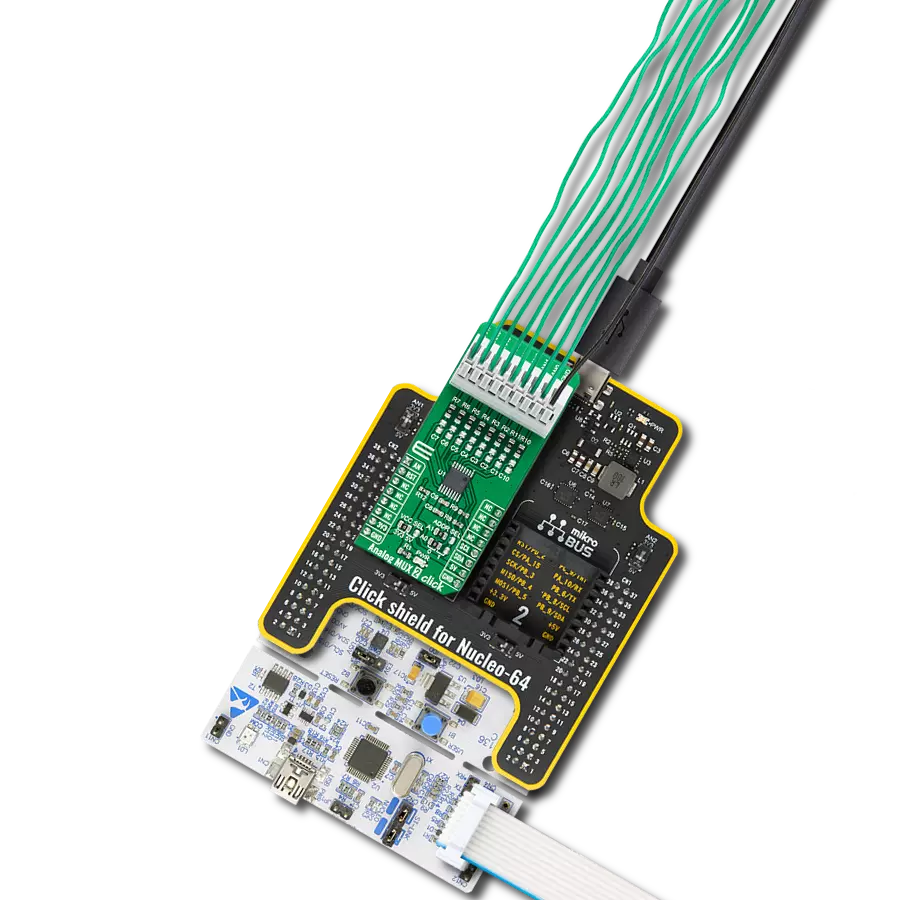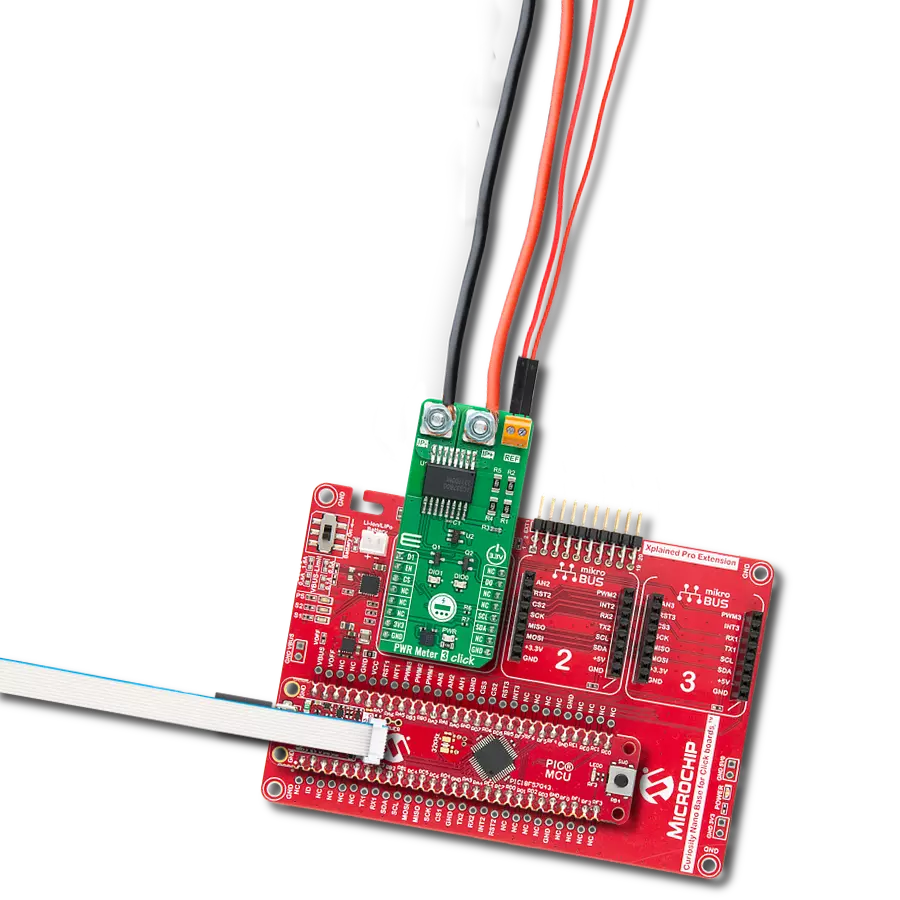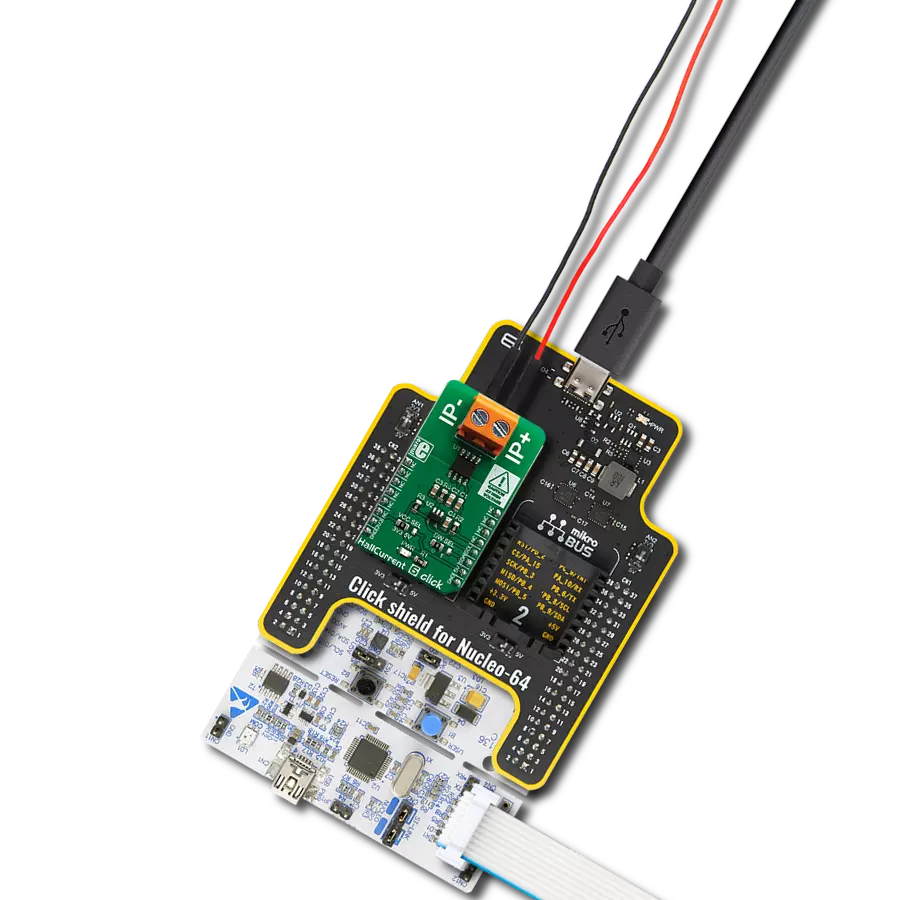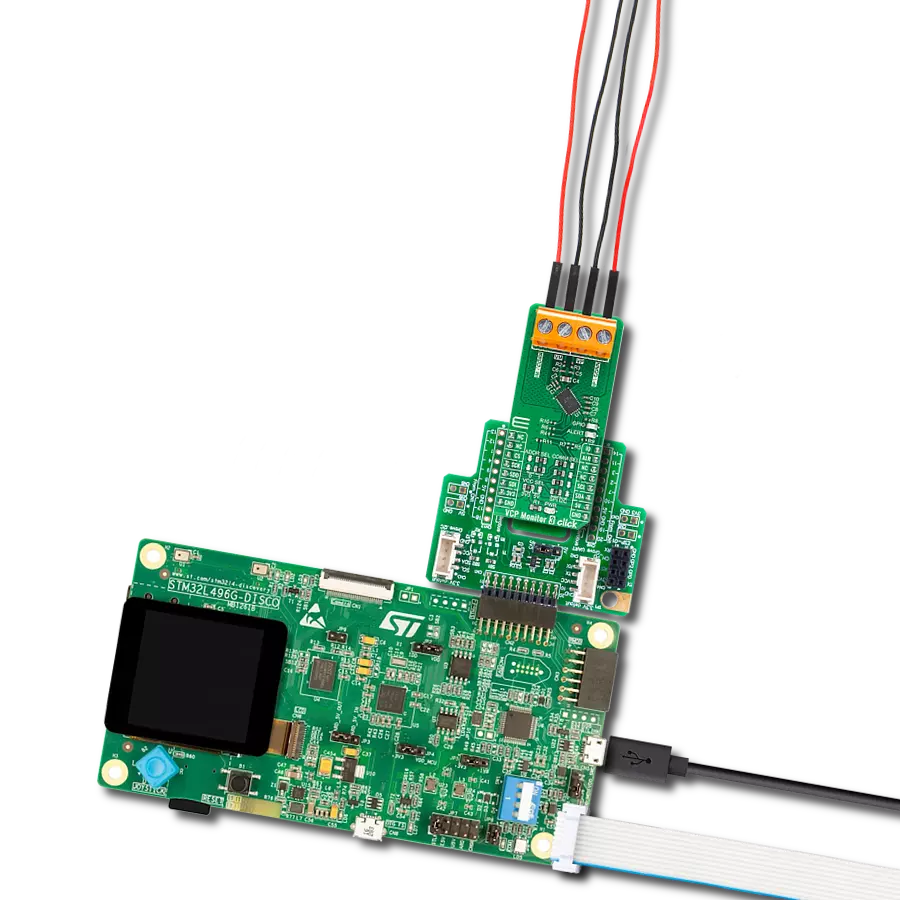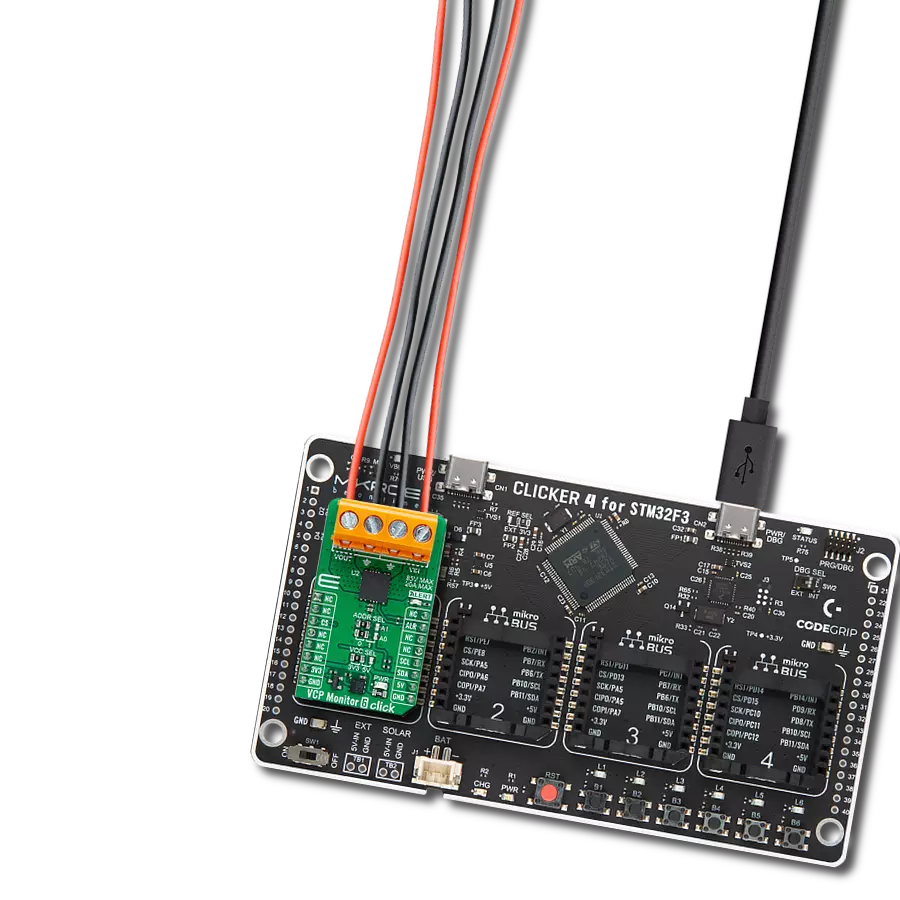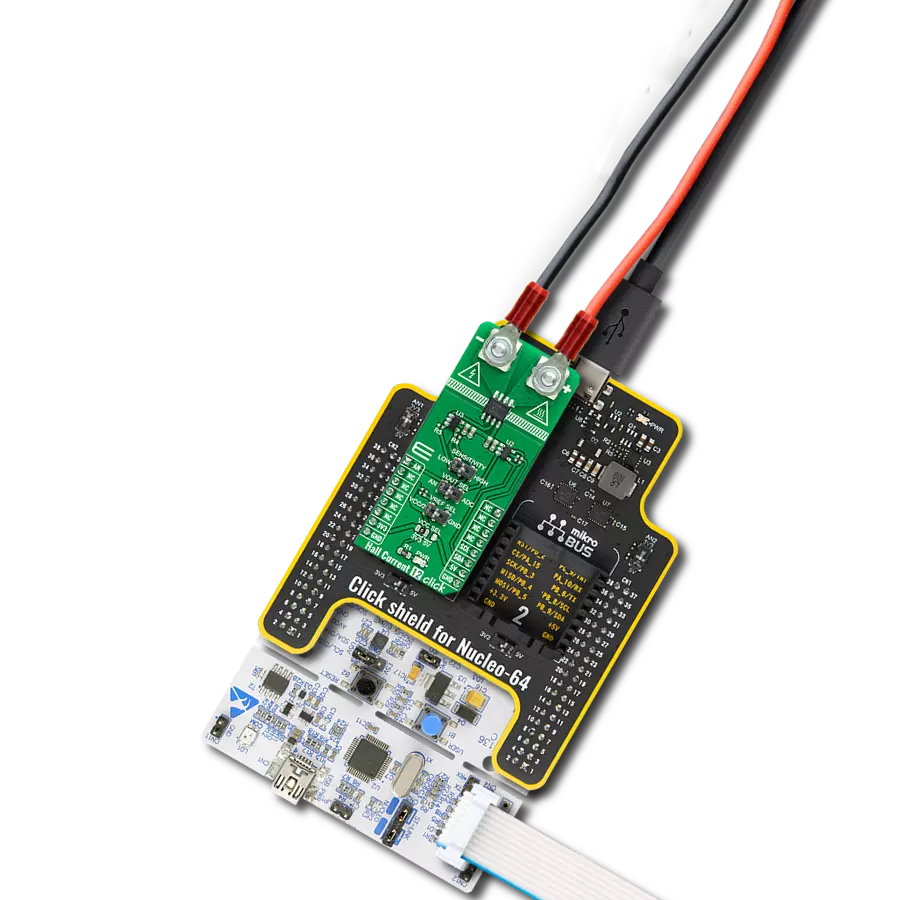Efficiently manage your energy resources with confidence using our DC power and energy monitoring solution, offering unparalleled accuracy and insights
A
A
Hardware Overview
How does it work?
PAC1934 Click is based on the PAC1934, a four-channel DC power/energy monitor from Microchip. The click is designed to run on either a 3.3V or 5V power supply. It communicates with the target microcontroller over an I2C interface. Four 4-Terminal current sense shunt resistors are connected to the current sense amplifier (in the chip). Electricity is brought to shunts via screw terminals. The middle screw connector is GND which can be used for bus voltage monitoring. This Click enables energy monitoring with
integration periods from 1ms up to 36 hours or longer. Bus voltage, sense resistor voltage, and accumulated proportional power are stored in registers for retrieval by the system master or Embedded Controller. The PAC1934 is a four-channel bi-directional high-side current-sensing device with precision voltage measurement capabilities, DSP for power calculation, and a power accumulator. It measures the voltage developed across an external sense resistor (VSENSE) to represent the high-side current of a
battery or voltage regulator. The PAC1932/3/4 also measures the SENSE1+ pin voltages (VBUS). This Click board™ can operate with either 3.3V or 5V logic voltage levels selected via the PWR SEL jumper. This way, both 3.3V and 5V capable MCUs can use the communication lines properly. Also, this Click board™ comes equipped with a library containing easy-to-use functions and an example code that can be used as a reference for further development.
Features overview
Development board
UNI Clicker is a compact development board designed as a complete solution that brings the flexibility of add-on Click boards™ to your favorite microcontroller, making it a perfect starter kit for implementing your ideas. It supports a wide range of microcontrollers, such as different ARM, PIC32, dsPIC, PIC, and AVR from various vendors like Microchip, ST, NXP, and TI (regardless of their number of pins), four mikroBUS™ sockets for Click board™ connectivity, a USB connector, LED indicators, buttons, a debugger/programmer connector, and two 26-pin headers for interfacing with external electronics. Thanks to innovative manufacturing technology, it allows you to build
gadgets with unique functionalities and features quickly. Each part of the UNI Clicker development kit contains the components necessary for the most efficient operation of the same board. In addition to the possibility of choosing the UNI Clicker programming method, using a third-party programmer or CODEGRIP/mikroProg connected to onboard JTAG/SWD header, the UNI Clicker board also includes a clean and regulated power supply module for the development kit. It provides two ways of board-powering; through the USB Type-C (USB-C) connector, where onboard voltage regulators provide the appropriate voltage levels to each component on the board, or using a Li-Po/Li
Ion battery via an onboard battery connector. All communication methods that mikroBUS™ itself supports are on this board (plus USB HOST/DEVICE), including the well-established mikroBUS™ socket, a standardized socket for the MCU card (SiBRAIN standard), and several user-configurable buttons and LED indicators. UNI Clicker is an integral part of the Mikroe ecosystem, allowing you to create a new application in minutes. Natively supported by Mikroe software tools, it covers many aspects of prototyping thanks to a considerable number of different Click boards™ (over a thousand boards), the number of which is growing every day.
Microcontroller Overview
MCU Card / MCU
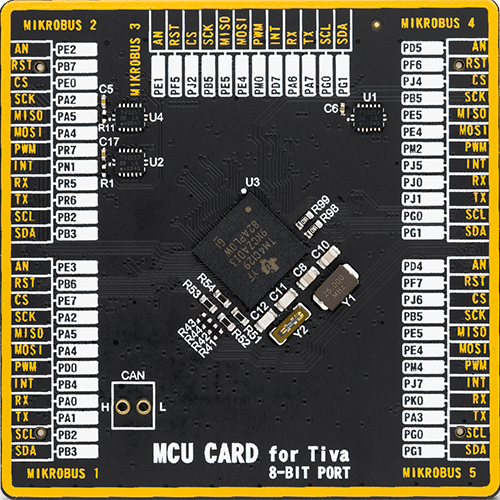
Type
8th Generation
Architecture
ARM Cortex-M4
MCU Memory (KB)
512
Silicon Vendor
Texas Instruments
Pin count
212
RAM (Bytes)
262144
Used MCU Pins
mikroBUS™ mapper
Take a closer look
Click board™ Schematic

Step by step
Project assembly
Track your results in real time
Application Output
1. Application Output - In Debug mode, the 'Application Output' window enables real-time data monitoring, offering direct insight into execution results. Ensure proper data display by configuring the environment correctly using the provided tutorial.

2. UART Terminal - Use the UART Terminal to monitor data transmission via a USB to UART converter, allowing direct communication between the Click board™ and your development system. Configure the baud rate and other serial settings according to your project's requirements to ensure proper functionality. For step-by-step setup instructions, refer to the provided tutorial.

3. Plot Output - The Plot feature offers a powerful way to visualize real-time sensor data, enabling trend analysis, debugging, and comparison of multiple data points. To set it up correctly, follow the provided tutorial, which includes a step-by-step example of using the Plot feature to display Click board™ readings. To use the Plot feature in your code, use the function: plot(*insert_graph_name*, variable_name);. This is a general format, and it is up to the user to replace 'insert_graph_name' with the actual graph name and 'variable_name' with the parameter to be displayed.
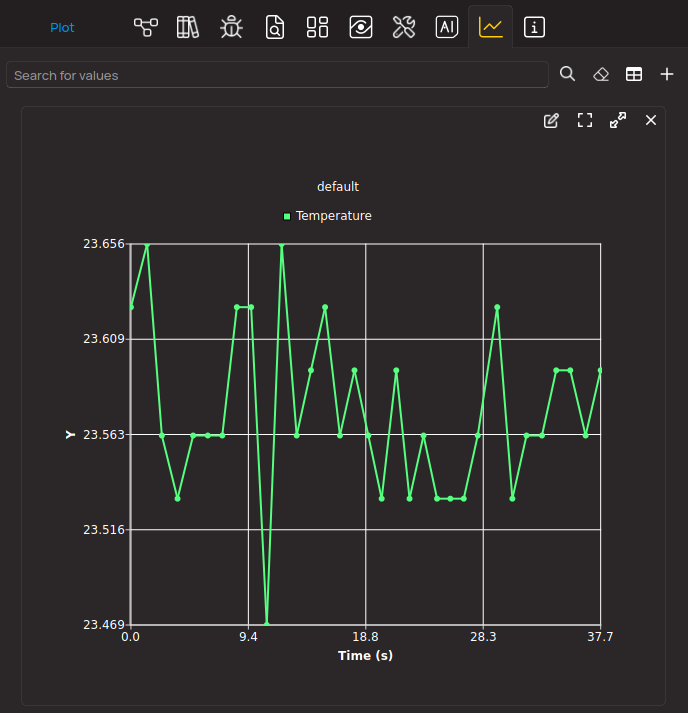
Software Support
Library Description
This library contains API for PAC1934 Click driver.
Key functions:
pac1934_write_byte- Write one byte functionpac1934_read_byte- Read one byte functionpac1934_send_command- Send command function.
Open Source
Code example
The complete application code and a ready-to-use project are available through the NECTO Studio Package Manager for direct installation in the NECTO Studio. The application code can also be found on the MIKROE GitHub account.
/*!
* \file
* \brief Pac1934 Click example
*
* # Description
* This application measures the voltage.
*
* The demo application is composed of two sections :
*
* ## Application Init
* Initalizes device, enables the device and makes an initial log.
*
* ## Application Task
* This is an example that shows the most important
* functions that PAC1934 Click has, it mesures voltage, current, power and energy.
*
* \author MikroE Team
*
*/
// ------------------------------------------------------------------- INCLUDES
#include "board.h"
#include "log.h"
#include "pac1934.h"
// ------------------------------------------------------------------ VARIABLES
static pac1934_t pac1934;
static log_t logger;
// ------------------------------------------------------ APPLICATION FUNCTIONS
void application_init ( void )
{
log_cfg_t log_cfg;
pac1934_cfg_t cfg;
/**
* Logger initialization.
* Default baud rate: 115200
* Default log level: LOG_LEVEL_DEBUG
* @note If USB_UART_RX and USB_UART_TX
* are defined as HAL_PIN_NC, you will
* need to define them manually for log to work.
* See @b LOG_MAP_USB_UART macro definition for detailed explanation.
*/
LOG_MAP_USB_UART( log_cfg );
log_init( &logger, &log_cfg );
log_info( &logger, "---- Application Init ----" );
// Click initialization.
pac1934_cfg_setup( &cfg );
PAC1934_MAP_MIKROBUS( cfg, MIKROBUS_1 );
pac1934_init( &pac1934, &cfg );
}
void application_task ( void )
{
float read_value;
pac1934_dev_reset( &pac1934 );
pac1934_write_byte( &pac1934, PAC1934_CHANNEL_DIS, PAC1934_CHANNEL_DIS_ALL_CHA );
pac1934_write_byte( &pac1934, PAC1934_CTRL_REG, PAC1934_CTRL_SAMPLE_RATE_8 | PAC1934_CTRL_SINGLE_SHOT_MODE );
Delay_ms ( 100 );
pac1934_send_command( &pac1934, PAC1934_REFRESH_CMD );
read_value = pac1934_measure_voltage( &pac1934, 1 );
log_printf( &logger, "Voltage : %.2f V\r\n", read_value );
read_value = pac1934_measure_current( &pac1934, 1 );
log_printf( &logger, "Amperage : %.2f mA\r\n", read_value );
read_value = pac1934_measure_power( &pac1934, 1 );
log_printf( &logger, "Power : %.2f W\r\n", read_value );
read_value = pac1934_measure_energy( &pac1934, 1, 8 );
log_printf( &logger, "Energy : %.2f J \r\n", read_value );
log_printf( &logger, "--------------------- \r\n" );
Delay_ms ( 1000 );
}
int main ( void )
{
/* Do not remove this line or clock might not be set correctly. */
#ifdef PREINIT_SUPPORTED
preinit();
#endif
application_init( );
for ( ; ; )
{
application_task( );
}
return 0;
}
// ------------------------------------------------------------------------ END



















